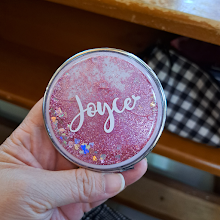I need to justify the existence of the bread maker in my kitchen and maximize its features so that I get the most bang out of every buck my hubby spent in getting this birthday-and-anniversary gift. Haha.
Furthermore, I can make healthy homemade bread (and cake) for my two boys (hubby and baby)! :D
I made two milk loaves - one loaf with the basic white bread setting and the other loaf with the French bread setting.
Ingredients:
(Makes a 2lb bread)
1 cup milk, room temperature
1/2 cup water
2 tablespoons butter, diced
1 teaspoon salt
2 teaspoons molasses sugar
3 cups bread flour
1 teaspoon dry yeast
How to:
1. By following the bread maker's manual, I have listed the ingredients' sequence correctly - in terms of which ingredient goes into the bread maker first - in the list above.
2. Close the lid, select the "basic" setting, loaf size (2lb), crust type (medium), and press start.
3. Once the baking cycle is done, remove the bread pan from the machine to cool down.
Note: Please add the ingredients into the bread pan by following your bread maker's manual.
Note: The middle sank a little because I accidentally spilled extra yeast when I was adding yeast to the flour. Too much yeast caused the bread to rise and collapse. [Source]
Bread Maker Milk Loaf
(with French bread setting)
(with French bread setting)
Recipe from my Cornell Bread Master bread maker manual.
Ingredients:
(Makes a 2lb bread)
360ml milk, room temperature
1 teaspoon salt
3 tablespoons molasses sugar
520g bread flour (I use 500g bread flour + 20g wholemeal flour)
1 teaspoon dry yeast
How to:
1. By following the bread maker's manual, I have listed the ingredients' sequence correctly - in terms of which ingredient goes into the bread maker first - in the list above.
2. Close the lid, select the "French" setting, loaf size (2lb), crust type (medium), and press start.
3. Once the baking cycle is done, remove the bread pan from the machine to cool down.
Note: Please add the ingredients into the bread pan by following your bread maker's instruction manual.























Hi Joyce,
ReplyDeleteYou have tried out the Milk Bread! You are right, excess yeast (and over proofing too!) will cause the bread to rise and fall, usually in the centre. I hope that the texture is still soft and taste good! My bread machine do not have the French Setting, as mine was an old model, bought it about 7 or 8 years ago.
Homemade bread is the best!
Yup, the center is still soft. Phew. :D
DeleteHi Joyce,
ReplyDeleteI just got a cornell breadmaker too. How did you remove the bread from the pan? Tq!
Hi Rebecca, hope these points will help. :)
DeleteTo remove the bread easily, before you put any of the raw ingredients into the pan, try rubbing the kneading paddles with some oil/butter. After baking is done, take the pan out from the machine, leave cool for about 10 minutes, then use a rubber/plastic (not metal) spatula to loosen the bread. Turn the pan upside-down and give the pan a few good shakes. The bread should come off easily.
But, if you forget to do so (which happens to me half of the time, haha), you can try using the same rubber/plastic spatula to loosen the bread a few times and shake the pan harder. The bottom of the bread might tear because it will be stuck to the paddles.
By the way, don't leave the freshly baked bread in the pan too long. The bottom will become soggy.
Happy baking! :)